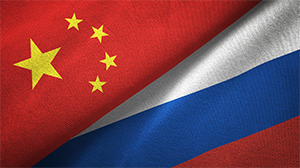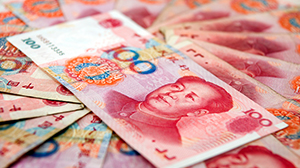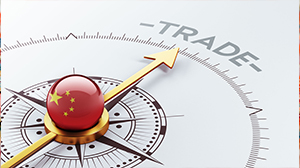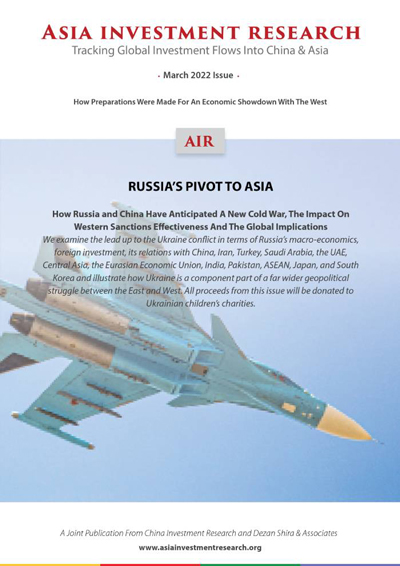Russia’s Pivot to China – Geopolitics, Trade, and Development in the Wake of the Ukraine Conflict

By Asia Investment Research
China’s relations with Russia have changed in recent weeks due to the conflict in Ukraine. But much of what has occurred has also been the result of apparent planning between the two countries. There are strong trade, geopolitical and supply chain ties between Beijing and Moscow, with both tied together by energy demands and a deep mistrust of Washington. In this article, Chris Devonshire-Ellis, founder and Chairman of one of China’s most successful consulting businesses, and a Visiting Professor at the St. Petersburg School of Higher Economics, gives his unique and insightful view as to the real situation between these two trade giants – and what the future is likely to bring.
This article has been extracted from the current issue of Asia Investment Research, titled ‘Russia’s Pivot To Asia’ which contains chapters on all Asian economies and the impact of the Ukraine conflict. Copies may be obtained on a pay-what-you-want basis here.
Proceeds are being donated to Ukrainian children’s charities.
Introduction

China and Russia have grown increasingly close in recent years, including as trading partners, in a relationship that brings both opportunities and risks as Russia reels from tough new sanctions led by the West in response to its invasion of Ukraine. Total trade between China and Russia jumped 35.9% in 2021 last year to a record US$147.9 billion, according to Chinese customs data, with Russia serving as a major source of oil, gas, coal and agriculture commodities, and running a trade surplus with China.
Since sanctions were imposed in 2014 after Russia annexed Ukraine’s Crimea, bilateral trade has expanded by more than 50% and China has become Russia’s biggest export destination The two were aiming to boost total trade to US$200 billion by 2024, but according to a new target unveiled last month during Russian President Vladimir Putin’s visit to Beijing for the Winter Olympics, the two sides want bilateral trade to grow to US$250 billion. It should be noted that the two men enjoy close personal relations, as evidenced at meetings and anecdotes the pair shared with the floor at the 2018 St. Petersburg International Economic Forum, with tales of Putin serenading Xi Jinping at the piano during private gatherings at Putin’s Dacha in Moscow.
The relationship goes deeper than pure business and has manifested itself in an understanding of global geopolitics and especially a growing distrust of the United States. Shared experiences of sanctions and tariff wars with Washington has resulted in collaboration and planning to offset anticipated US actions. As sanctions against Russia mount, China could offset some of its neighbor’s pain by buying more but would also be wary of running foul itself of potential sanctions.
Here we highlight key areas of trade cooperation between China and Russia as follows:
Energy

Exports of Russian oil and gas to China have steadily increased. Russia is China’s second-biggest oil supplier after Saudi Arabia, with volumes averaging 1.59 million barrels per day last year, or 15.5% of Chinese imports. About 40% of supplies flow via the 4,070-km (2,540-mile) East Siberia Pacific Ocean (ESPO) pipeline that was financed by US$50 billion in Chinese loans. Russia is also Beijing’s No. 3 gas supplier, exporting 16.5 billion cubic metres (bcm) of the fuel to China in 2021, meeting about 5% of Chinese demand.
Supplies via the Power of Siberia pipeline, which is not connected to the network of westbound Russian gas pipelines, began in late 2019 and are due to rise to 38 bcm a year by 2025, up from 10.5 bcm in 2021, under a 30-year contract worth more than US$400 billion. Russia aims to build a second gas pipeline, Power of Siberia 2, with capacity for 50 bcm a year to run via Mongolia to China. Russia was also China’s No. 2 coal supplier in 2021.
In February this year, Putin unveiled new Russian oil and gas deals with China worth an estimated US$117.5 billion. These additional figures are significant in understanding the effectiveness of Western sanctions upon Russia. Russia’s bilateral trade with the European Union is 2021 was Euros 247.8 billion, with Russian exports worth Euros 158 billion. Of that, about Euros 110 billion was in oil and gas, leaving Euros 48 billion in other trade such as autos, machinery and so on. That can be swallowed up within two years assuming the China-Russian revised trade figures to US$250 billion are realized by 2024 – as is the stated intent
Russia already sends gas to China via its Power of Siberia pipeline, which began pumping supplies in 2019, and by shipping LNG. It exported 16.5 billion bcm of gas to China in 2021. The Power of Siberia network is not connected to pipelines that send gas to Europe, which has faced surging gas prices due to tight supplies, one of several points of tension with Moscow. Under plans previously drawn up, Russia aims to supply China with 38 bcm of gas by pipeline by 2025. Separately, Rosneft, headed by longstanding Putin ally Igor Sechin, signed a deal with China’s CNPC to supply 100 million tonnes of oil through Kazakhstan over 10 years, effectively extending an existing deal. Rosneft said the new deal was worth US$80 billion.
The agreements boosted the ruble and the Russian stock market, including shares in Rosneft and Gazprom. It is significant that after the Moscow Stock Exchange was suspended for three weeks after Russian military rolled into Ukraine and Western sanctions were imposed on the first day on reopening on March 21, Russian stocks rose by 11% in early trading before settling down to daily gains of 4.4%. The ruble meanwhile has rebounded in value to pre-Ukraine conflict levels – precisely the opposite of what was expected to happen in the West.
However, the new deal with Beijing does not impact on Russian gas supplies that were otherwise bound for Europe, as the Rosneft deal involves gas piped from the Pacific island of Sakhalin and is not connected to Russia’s European pipeline network. Gazprom said in a statement it planned to increase gas exports to China to 48 bcm per year, including via a newly agreed pipeline that will deliver 10 bcm annually from Russia’s Far East. Under previous plans, Russia aimed to supply China with 38 bcm by 2025. The announcement did not specify when it would reach the new 48 bcm target.
Gazprom already produces more than 10 million tonnes of LNG / year in Sakhalin. That raises the possibility that should the political situation later change, Russia could once again supply gas to the EU. We suspect demand for cheaper prices in Europe will eventually put this proposal back on the negotiating table despite US attempts to prevent it. It should be noted however that there may be a limit to China’s patience concerning the Ukraine conflict, which is disabling part of its own supply chains and interfering with the preferred Chinese modus operandi of ‘sustainable development.’ To illustrate growing discontent, on March 25, Sinopec canceled a proposed US$500 million investment with Russia’s Sibur, its largest petrochemical producer for a 40% stake in a facility in East Siberia. Putin will have noticed.
Other Commodities

In 2019, China allowed the import of soybeans from all regions of Russia, (it had previously been restricted to just a few) and the two countries signed a deal to deepen cooperation in soybean supply chains, which saw more Chinese firms growing the crop in Russia. Soybean exports to China stood at 543,058 tonnes last year and are expected to reach 3.7 million tonnes by 2024.In 2021, China approved beef imports from Russia, while in March this year, Beijing allowed imports of wheat from all regions of Russia, removing previous restrictions. Other food exports from Russia to China include fish, sunflower oil, rapeseed oil, poultry, wheat flour and chocolate. China is also a huge buyer of timber from Russia’s Far East, with imports of timber and related products worth US$4.1 billion last year. In the other direction, China sells mechanical products, machinery and transport equipment, mobile phones, cars, and consumer products to Russia. Chinese exports to Russia stood at US$67.6 billion last year, up 34% with this likely to be a growth market as Russia replaces previously EU sourced products with those from China and Asia.
There are yet to be implemented trade agreements that could be fast tracked to speed Russia-China bilateral trade faster and further. Beijing signed an as yet non-preferential (ie: no tariff cuts) Free Trade Agreement with the Eurasian Economic Union (EAEU) in 2018, as and when tariff cuts can be agreed, the impact of China-Russian free trade would be enormous. Other EAEU members include Armenia, Belarus (itself under severe Western sanctions), Kazakhstan and Kyrgyzstan.
Investment/Chinese Financing

Western sanctions have forced Russia to look towards China for investment opportunities in recent years, and Chinese state banks have helped Russia finance everything from infrastructure to oil and gas projects under China’s Belt and Road Initiative. Russia is by far Beijing’s largest recipient of state sector financing, securing 107 loans and export credits worth US$125 billion from Chinese state institutions between 2000 and 2017 (source: College of William and Mary’s AidData).
China and Russia began using their own currencies to settle bilateral trade in 2010 and opened their first currency swap line in 2014, which they renewed in 2020 for 150 billion yuan over three years. RMB Yuan settlements accounted for 28% of Chinese exports to Russia in the first half of 2021, compared with just 2% in 2013, as both countries seek to ease reliance on the dollar while developing their own respective cross-border payment systems. Chinese currency accounted for 13.1% of the Russian central bank’s foreign currency reserves in June 2021, compared with just 0.1% in June 2017, with Moscow’s US dollar holdings dropping to 16.4% from 46.3% in the same period. Russia now carries no dollar reserves in its sovereign wealth fund – yet has the world’s largest reserves of gold. Just last week at the BRICS annual ministerial meeting, calls were once again made to phase out intra-BRICS trade in US dollars and use respective currencies instead. If adopted, it would be significant – BRICS trade accounted for 15% of all global trade in 2020 and is projected to rise to 50% by 2030.
It is becoming increasingly significant that the US dollar has lost 80% of its value against gold over the past 20 years; with China and Russia looking to further de-dollarize, the greenback could come under increasing pressure over the coming years.
Hong Kong

At the end of 2020, Hong Kong was the third most popular destination in Asia for Russian investment, behind Singapore and Thailand, with a total FDI stock of US$364 million. Hong Kong and Russia signed a Double Tax Treaty in 2017, which has the effect of reducing withholding and other trade taxes and sought to establish Hong Kong as a services base for Russian businesses accessing the mainland China and other nearby ASEAN markets.
At the end of 2020, Hong Kong was the third largest Asian investor in Russia, behind Singapore and South Korea, with a total FDI stock of US$2.5 billion, helped in part by the Russia-Hong Kong Double Tax Agreement. However, the value of FDI inward stock in Russia fluctuated during this period from approximately US$471.5 billion in 2013 to US$449 billion in 2020, with the decline due to sanctions placed on the country in 2014 due to the annexation of Crimea.
Russian businesses also began to experience difficulties in establishing bank accounts in both mainland China and Hong Kong due to concerns that the United States would punish banks that did so, the emphasis being placed on a ‘safety first’ protocol of non-engagement. Due to the severity of 2022 sanctions, that viewpoint may have weakened with new routes to operational financing instead now being considered.
In 2020, Russia was Hong Kong’s 21st largest trading partner worldwide (accounting for 0.5% of the city’s total trade) and its largest in CEE. Russia was Hong Kong’s 18th largest export market worldwide (with 0.7% of the city’s total exports) and its largest in CEE (35%) mostly IT/tech, while Russia was Hong Kong’s 27th largest import market worldwide (with 0.2% of the city’s total imports) and its largest in CEE (43%) – mostly energy.
However, with Chinese and Hong Kong banks still wary of US sanctions, we see that it is Dubai that is likely to become the new Asian investment hub for facilitating Russian capital into the Gulf, Central, South and Southeast Asia.
Summary

China has been consistent in its support for Russia, if not the conflict in Ukraine. Beijing can be expected to be relieved when the situation is finally resolved. Moscow too has stated an end is in sight. Assuming this to be correct (and this still may take up much of 2022) there remains no doubt that supply chains to and from China and Europe will have dramatically changed. This means that countries such as Iran now have an increasing strategic importance as new, more southerly supply chains begin to emerge. Iran’s Minister of Urban Development stated this week that numerous Asian countries, including China were in discussions to work out new routes and the required infrastructure development.
In terms of Russia, it remains unclear and in part, unconvincing the impact on the Russian economy the massive amount of sanctions imposed upon the country will have. President Putin this week announced an additional US$18 billion of financing to accelerate Northern Sea Passage and Arctic railway connectivity. Russia certainly has the funding, even if the West pushes it to a sovereign default on debt, this is an artificial construct and doesn’t mean the country is bankrupt.
What has changed of course is that the West – meaning primarily the EU, as American trade volumes are small – have effectively closed off their markets to Russia. Reactions amongst Russian consumers were swift, with supermodels destroying their Chanel handbags along with other anti-European shows of consumer petulance. This means that up-market and other Asian brands have a distinct marketing opportunity. The luxury goods market in Russia was worth US$2.5 billion in 2021.
That means that China-Russia trade and development can be expected to continue, and as Foreign Ministers Wang Yi and Sergey Lavrov stated a weeks ago, ‘as normal’. The inability for Russia to purchase Western commodities – some projected as ‘vital’ by the West – is however unlikely to be long-lasting. It will source replacement products both in terms of critical industrial supplies as well as consumer goods – from elsewhere. Some Russian analysts suggest this could occur within 2-3 years, while others are more pessimistic. It is hard to predict – but it is true that the longer time passes, the less effective todays sanctions will be. It also means that trade and project partnering will change.
That also means more joint venture partnering – with some Chinese (or China funded) strategic businesses for example in energy, picking up Russia projects abandoned by the likes of Shell, Total and other Western energy firms. China can also be expected to take out development leases on large tracts of Russian land, and especially in the Russian Far East, not least to compensate for the inconvenience caused to it by the Ukraine conflict. Russia has a lot of land and resources to offer, a point perhaps not fully appreciated by Western sanctions analysts.
Other Sino-Russia JV projects will become more common – and especially in Central Asia. Afghanistan needs rebuilding, while both China and Russia recently signed off respective 25-year and 20-year agreements with Iran to help reconstruct long-depreciated infrastructure. Both are rebuilding and developing Iran’s national airport and aviation infrastructure.
It remains hard to see how Washington can prevent this, even if it wants too. The United States economy isn’t great right now (partially as a result of the sanctions imposed on Russia) with US inflation at 8.5%, the highest since 1981, and the EU rate at 6%, the highest for 40 years. The United States has tried to wean itself off Chinese imports and to some extent partially succeeded in doing so with the 2018 Tariff Wars, which merely shifted some production to other markets, mainly in ASEAN. But the longer term effect has been minimal, in 2021, American imports from China were higher than before the US imposed tariffs.
Meanwhile, China and Russia both want the same thing and know there will be struggles in getting it. They want to see the United States lose its monopoly over the use of the US dollar and the SWIFT banking network as sanctions weapons. They want to see a fairer system of global trade and the regulatory systems put in place to ensure this cannot be manipulated in favor of one country. They both want a larger say in global affairs and both want a better rules-based order in position. (To see what is meant by that, this article explains the loss of due process in the West). To some extent, Russia and China – and there are plenty of countries that could fall into position behind them – are involved in a global, geopolitical battle for a better-balanced world. The Ukraine conflict is sadly, a symptom of a rather larger picture that both Beijing and Moscow seem determined to act out. Unless even more serious conflicts emerge (I do not see an invasion of Taiwan on the cards) then the China and Russia ‘strategic relationship’ will stay the course. The interesting part will be to see who chooses to align themselves with them.
This report was extracted from the current issue of AIR magazine, ‘Russia’s Pivot To Asia’. That can be downloaded on a pay-what-you-want basis here
Related Reading
- Identifying Opportunities Within the Belt and Road Initiatives
- Russia and China Sign 10-Year US$80 Billion Oil Supply Agreement
About Us
China Briefing is written and produced by Dezan Shira & Associates. The practice assists foreign investors into China and has done so since 1992 through offices in Beijing, Tianjin, Dalian, Qingdao, Shanghai, Hangzhou, Ningbo, Suzhou, Guangzhou, Dongguan, Zhongshan, Shenzhen, and Hong Kong. Please contact the firm for assistance in China at china@dezshira.com.
Dezan Shira & Associates has offices in Vietnam, Indonesia, Singapore, United States, Germany, Italy, India, and Russia, in addition to our trade research facilities along the Belt & Road Initiative. We also have partner firms assisting foreign investors in The Philippines, Malaysia, Thailand, Bangladesh.
- Previous Article China’s 2022 Negative List for Market Access: Restrictions Cut, Financial Sector Opening
- Next Article Chinas “Nationaler Einheitsmarkt” – Standardisierung des Inlandsmarkts zur Förderung des internen Wirtschaftskreislaufs









